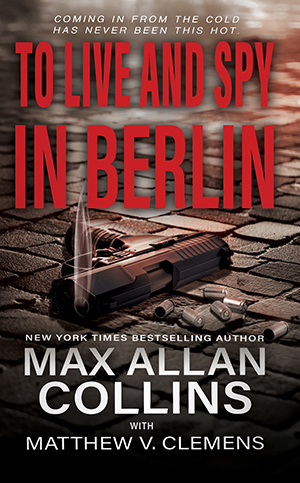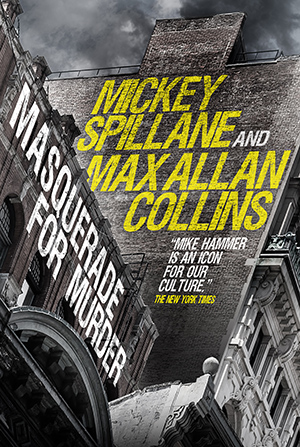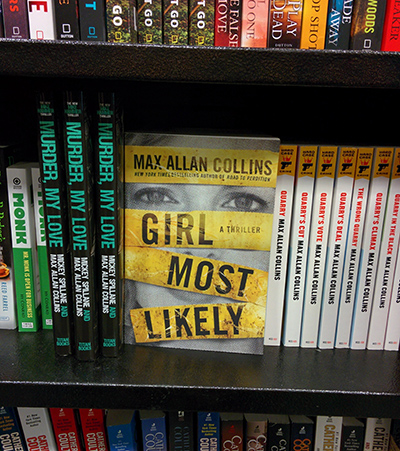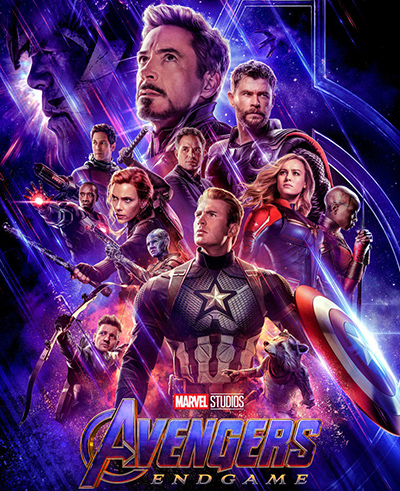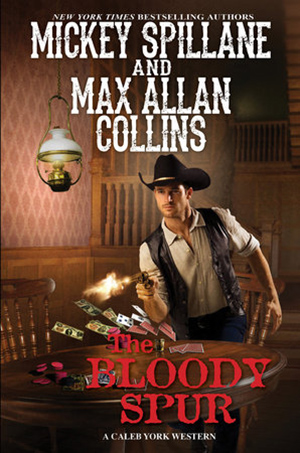The third in the John Sand Trilogy – To Live and Spy In Berlin – comes out tomorrow, Wednesday July 14.
Both my co-author Matthew Clemens and I consider this the best of the three, although we are proud of each one individually and more so collectively.
As Matt and I have often expressed, the John Sand novels reflect our love of Ian Fleming’s Bond novels and the movies they spawned, particularly the first six (five of which starred Sean Connery). There’s been some confusion from people thinking we’re doing spoofs when homage is more like it. Possibly pastiche, although I think we go beyond that.
The books imagine John Sand as the “real-life” spy the world’s most famous fictional spy was based upon. Sand has a new wife, Stacey, and is working for a new international espionage organization. We put him – them – in an historical context, so a few famous faces turn up in each novel. And in the first three, John F. Kennedy has chosen Sand as his go-to spy.
We pulled this off in a short period of time, and while we hope to do more Sand novels, we admit to being bushed. We plot them together, share the research, stay in constant communication while Matt writes a rough draft, after which I write my draft, still staying in touch with my co-author. It is as genuine a collaboration as you are likely to find, rivaled only by Barb and me on the Antiques series.
I refer to this as the John Sand Trilogy because whether it goes beyond that number of entries is wholly in your hands – yours and whatever readers otherwise stumble onto what we think is a very entertaining series.
No book giveaway yet, but stayed tuned.
My panel on Ms. Tree, Mike Hammer and Nolan for the virtual San Diego Comic Con is at 12 PM to 1 PM on Friday, July 23. Info here.
Some of you may be aware of the fuss regarding Wild Dog that was splashed all over the Internet last week (and still going). This is how CBR.com related it, relying on Bleeding Cool:
Bleeding Cool posted a number of panels from the upcoming Brian Azzarello and Alex Maleev project, which shows the Suicide Squad paired with Red Hood to hunt down the Joker to finally make him pay for his crimes, and Wild Dog is available to be part of the Suicide Squad because he was in prison after being arrested during the Capitol Insurrection.
In the leaked panels, Wild Dog even brags about defecating on the desk of the Speaker of the House. He also says stuff like, “Garbage that’s been happenin’ in this country…it’s all fucking lawless…all the while we’re being regulated to think.”
Beatty, who co-created Wild Dog with writer Max Allan Collins, shared his displeasure with this new take on his creation on his Facebook page, “This is not the Wild Dog Max Allan Collins and I created. We are both angered and appalled at this offensive and out of character reworking of our hero. Yes, he was a vigilante. Yes, he was a gun nut.* But he wasn’t a conspiracy theory idiot or leader of a mob. This blatant disregard and disrespect for the creators’ intent is a slap in the face to both of us.”
Beatty referenced the CW version of
Wild Dog, portrayed by Hispanic actor, Rick Gonzalez, as being a reason the artist thinks that this is a particularly bad idea, “It seems additionally insulting, considering the positive portrayal of Wild Dog as a POC on the CW ARROW TV series. To now make him the leader of a mob of racist, violent, moronic goons pretty much destroys any possibility of future use of him as an actual hero — vigilante or not.”Wild Dog was introduced by Beatty and Collins in a miniseries for DC in 1987, as an urban vigilante who takes on the mob after his girlfriend is murdered. He later appeared in a series of stories by Collins and Beatty in
Action Comics Weekly.Beatty ended his missive by noting, “As the co-creator of Wild Dog, I need to say loud and clear, that what DC and Azzarello are currently presenting is not my Wild Dog, and neither Max nor I approve.”
Since then Terry has had more to say on his Facebook page (some of which has been quoted elsewhere). I was asked for my take on the matter by Bleeding Cool’s Rich Johnston.
Here’s what I wrote (with a title that was not used):
Max Allan Collins
My first reaction at discovering Wild Dog had been recruited into the Suicide Squad as the leader of the Jan. 6 Insurrection as a defecating Proud Boy-style seditionist was bewildered shock. Basically, “Huh?”
That quickly grew to rage, expressed mostly as, “Fuck DC,” and “Fuck the writer.” I shared these sentiments with Wild Dog’s artist/co-creator, Terry Beatty, and he basically tried to calm me down. But, obviously, it gradually worked him into a rabid lather, too.
For me, it’s settled into disappointment and disgust. Wild Dog was conceived as a home-grown costumed hero. No cape, no cowl, just what could be put together out of such items as a hockey mask (with its Jason resonance) and body armor and real-world stuff from a hardware store and a home workshop. The usual “what if” all fiction writers operate from – “what if” somebody decided to actually be a costumed hero?
The results were not always beneficial. When Wild Dog found himself confronted by a would-be Bucky to his Captain America, despite our hero’s best efforts to discourage the Pup’s participation, the child is nearly killed. Terry and I pursued this with Ms. Tree – she was a vigilante, too, but wound up both in jail and in a mental institution. I might add in the Ms. Tree feature, Terry and I explored such then-current (and still current, unfortunately) topics as date rape, abortion clinic bombings, and gay bashing.
Some defenders of what we see as a perverted use of our creation dismiss it on the grounds that Wild Dog is a minor, forgotten character. Well, tell that to DC, who have used the character in at least three other comics, most recently as a cast member of the Cave Carson comic book, and to the CW network, where Wild Dog was a recurring character on Arrow.
Wild Dog debuted in a four-issue mini-series, had a regular slot in Action Weekly, and a “Special” double-length one-shot. In addition Terry is an Eisner-winning Batman artist, and we were Eisner nominees for our Ms. Tree work at DC. I wrote a year of Batman as well as two Batman graphic novels and was the initial writer of the Tim Burton-era Batman newspaper strip. My graphic novel (with Richard Piers Rayner), Road to Perdition, generated an Academy Award-winning film that is often cited as one of the best comic book movies ever made, and the graphic novel itself appears on many “Best of” lists. As recently as 2011 Terry and I did Return to Perdition for DC.
So what?
So Terry and I both have long relationships with DC and might have expected better where one of our creations is concerned. Yes, DC owns the rights to the character, but simple courtesy and common decency might suggest going down this path with Wild Dog was ill-advised – and that at least the creators should be warned. After all, invoking the Jan. 6 riot was bound to attract attention and controversy – shock value was the point, after all.
Of course we weren’t informed, just as we were not told about Wild Dog being used on the Arrow TV show. We weren’t paid for that (one of the few things our contract gave us) until that fact went public. I have worked with many terrific people at DC, but DC itself remains what it’s always been – a corporation built on the bones of two Cleveland teenagers.
As for Brian Azzarello, who I have never met, I have to wonder what kind of writer uses the creation of another writer in such a reckless, disrespectful manner. Azzarello is one of a generation of comics writers who owe a certain debt to our Ms. Tree, the first successful crime comic book in decades when it appeared in 1981. Still the longest running private eye comic book of all time (50 issues plus specials), it paved the way for everything that followed. We might have expected better thanks than this.
DC owning Wild Dog doesn’t stop it being characterized as my work – the fame of Road to Perdition guarantees I will be mentioned in the context of a character who is tied to a political movement I abhor.
But a modicum of consideration from the publisher, and some respect from the writer, is too much to expect from the company and talent who ignore Bill Finger’s Batman in favor of Batman fingering Catwoman.
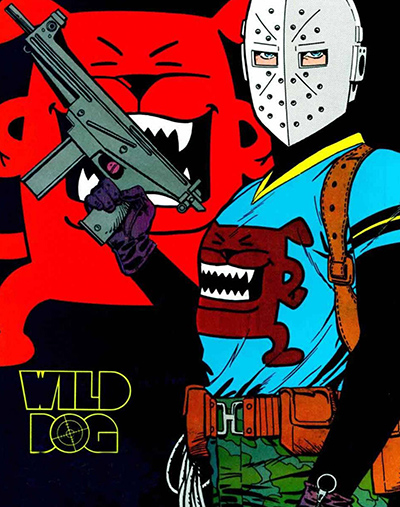
The Bleeding Cool story on Wild Dog, with more Terry Beatty responses and a lot of comments (where I weigh in here and there) can be seen here. Most of the comments are supportive; some are asinine.
Here is a wonderful Mike Hammer write-up with a focus on Complex 90.
Here’s a favorable if slightly patronizing Bookgasm review of the new Antiques Carry On.
Finally, Atomic Junkshop serves up a swell look at the Caleb York series with a great art and wonderful words.
M.A.C.
